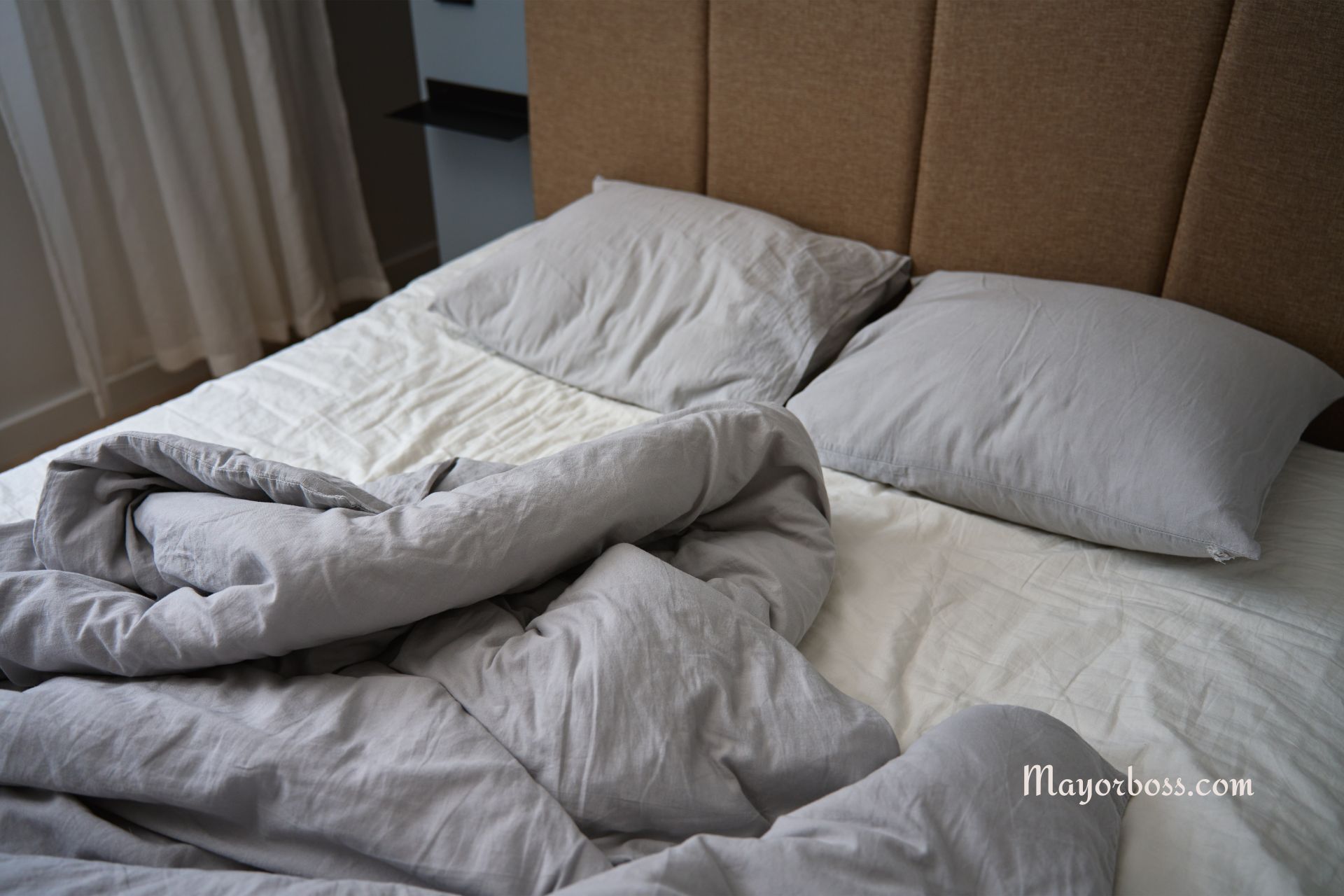Why It’s Bad to Make Your Bed Immediately After Waking Up
Many people like to make their bed as soon as they get up. This simple habit might seem like a good idea, but according to researchers, it can actually cause problems with dust mites. Dust mites are tiny creatures that live in your bedding. They are not dangerous on their own, but they can make you sneeze and cause other allergy problems. Letting your bed cool for a few minutes before making it may help reduce these problems.
Keep reading to learn more…

What Are Dust Mites?
Dust mites are very small bugs that live in dust. They love to live in warm and soft places like your pillow, sheets, and blankets. Dust mites feed on dead skin cells that we shed every day. Even though you cannot see them, their waste and tiny bits of body parts can cause allergic reactions in many people. Common allergy symptoms include sneezing, a runny nose, itchy eyes, and sometimes skin irritation.
How Heat and Humidity Affect Dust Mites
When you sleep, your body gives off heat and moisture. This warmth and moisture make your bed a perfect home for dust mites. If you make your bed right after waking up, you trap this warm and moist air under the covers. The trapped air holds many dust mite particles close to you. When you move around in bed, these particles can get into the air and cause allergy problems.
Why Delaying Bed-Making Helps
Waiting a few minutes before making your bed lets the warm air escape. This cooling process makes your bed less friendly to dust mites. When your bedding cools down and dries out a bit, fewer dust mites will survive there. This small change in your routine can help lower the amount of dust mite allergens in your bed.
Better Air Quality
When your bed is not made immediately, the air around your bedding has a chance to move around. Fresh air helps lower the number of dust mite particles in the area. Breathing cleaner air is good for your health, especially if you suffer from allergies or asthma. Letting the bed cool before making it means you are less likely to breathe in a lot of dust mite allergens.
Fewer Allergens
Dust mite allergens come from the tiny bits of dust mites and their waste. When you make your bed too soon, these allergens can be stirred up and spread into the air. If you wait a few minutes, the bedding cools down, and the allergens settle. This delay may lead to fewer allergens in your room, which can help reduce allergy symptoms over time.
Other Ways to Reduce Dust Mite Allergies
Changing your bed-making routine is a good step, but there are other ways to keep dust mite allergies under control. Here are some ideas that can help you create a healthier sleeping environment:
Wash Your Bedding Often
Wash your sheets, pillowcases, and blankets in hot water at least once a week. Hot water helps kill dust mites and remove their allergens. Make sure your bedding is completely dry before you put it back on your bed.
Use Special Covers
You can buy special covers for your pillows and mattress. These covers are made to keep dust mites from getting into your bedding. They act as a barrier and help keep allergens away from you while you sleep.
Control the Room’s Humidity
Dust mites like humid, warm places. You can use a dehumidifier or an air conditioner to lower the humidity in your room. Keeping the humidity below 50% makes it hard for dust mites to live and grow.
Changing Your Routine
It is easy to change the way you make your bed. Instead of making it as soon as you wake up, leave it unmade for a few minutes. This small pause lets the heat and moisture escape from your bed. When your bedding cools down, dust mites will have a harder time thriving. Over time, this simple habit can help reduce the number of dust mite allergens in your room.
How to Get Started
- Wake Up Gently: When you wake up, take a moment to stretch and relax before you make your bed.
- Let the Air Flow: Leave your bed unmade for 5 to 10 minutes. This allows the warm air and moisture to escape.
- Make Your Bed: After the wait, make your bed as usual. You will have fewer dust mite allergens around you.
- Follow Other Steps: Remember to wash your bedding regularly and use special covers if needed. Control the humidity in your room by using a dehumidifier or air conditioner.
